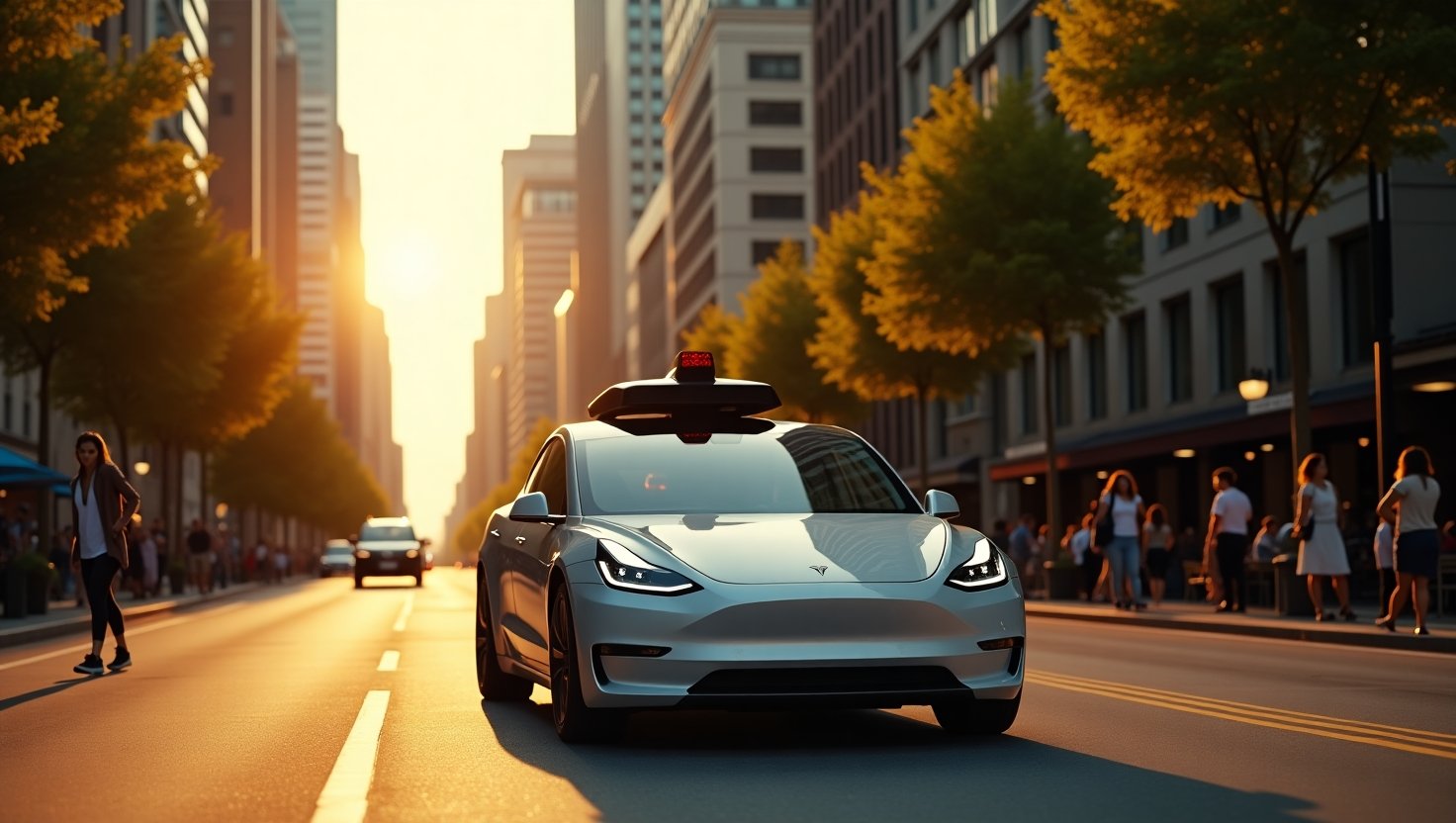Tesla AI Safety: Navigating the Future of Autonomous Driving
Introduction
Tesla has become a pivotal figure in the realm of AI safety and autonomous vehicle technology, spearheading innovations that are set to redefine the future of transportation. Pioneered by the visionary efforts of Elon Musk, Tesla’s foray into self-driving technology marks a significant leap toward a world where autonomous vehicles could become as ubiquitous as smartphones. At the core of these advancements is Tesla AI Safety, a crucial aspect that aims to ensure that this automated future is both safe and reliable. The significance of Tesla’s AI safety measures cannot be understated, as they impact how society will adapt to and accept autonomous driving as a standard mode of transportation.
Background
Tesla’s advanced self-driving technology has captured the imagination of many, yet it hasn’t been without its challenges. Recently, the U.S. National Highway Traffic Safety Administration (NHTSA) contacted Tesla concerning its robotaxi operations after reports of erratic driving surfaced (source: BBC News). These robotaxis, touted by Musk as the culmination of a decade of diligence, deployed in trials in Austin, Texas. Yet, concerns have been raised about their safety and operational behavior, eluding to differences between Tesla’s technology and that of its competitors, like Waymo and Uber. Understanding Tesla’s vision necessitates recognizing the company’s commitment to perfecting self-driving capabilities, albeit amid regulatory scrutiny and public safety concerns.
Trend
The trend toward self-driving technology is robust within the automotive industry. Companies like Waymo and Uber have also stormed this field, fostering a competitive environment where Tesla’s unique approach to robotaxis stands out. While Waymo capitalizes on LiDAR for precise navigation, Tesla’s strategy hinges largely on camera-based systems and neural networks. This methodological divergence reflects broader strategies within the sector, shaping the competitive landscape of autonomous driving. Public perception oscillates between awe at these technological feats and apprehension concerning safety, emphasizing a growing call for stringent AI regulation. As a result, these dynamics underscore a heightened interest in how AI safety protocols are developed and enforced, demanding that companies chart a course that will bolster both innovation and trust.
Insight
Despite Tesla’s advancements, challenges persist in ensuring the safety of its new AI systems as evidenced by incidents in pilot programs. These challenges bring forth an urgent need for regulatory oversight to guide self-driving technologies, serving as a catalyst for public confidence. Emerging quotes and insights from industry experts like Andrej Karpathy and Yann LeCun highlight the current shortcomings in AI evaluation methods, suggesting that new standards like LiveCodeBench Pro and Xbench are necessary to better assess AI performance (source). Such insights are pivotal, indicating that, much like a recipe requiring meticulous measurement for successful baking, AI safety must be measured with precision to ensure reliability amidst real-world complexities.
Forecast
Looking ahead, the future of Tesla AI safety remains layered with opportunities and risks. As regulatory bodies refine their oversight frameworks, Tesla’s robotaxis are likely to face stricter safety standards. Upcoming advancements in self-driving technology could revolutionize consumer trust and safety standards. The industry’s trajectory seems analogous to the aviation sector’s historical evolution, where stringent safety protocols transformed air travel into one of the safest modes of transportation. Similarly, autonomous vehicles could witness a transformation that aligns growing technological capabilities with public safety expectations. This evolution will necessitate an ongoing dialogue between innovators and regulators to ensure that Tesla and its ilk can safely integrate autonomous vehicles into daily life.
Call to Action
As the landscape of autonomous driving technology evolves, staying informed about AI safety and developments is crucial. Engage with Tesla’s announcements and those of related industries via social media platforms and newsletters to keep abreast of the latest advancements. By actively participating in discussions surrounding self-driving technology, stakeholders and consumers alike can foster an informed community that supports the safe implementation of autonomous vehicles.
Related Articles
– \”Tesla Car Troubles Continue as NHTSA Investigates Robotaxi Operations\”
– \”AI Evaluation Methods Under Scrutiny: What’s Next for Measuring True Intelligence?\”

